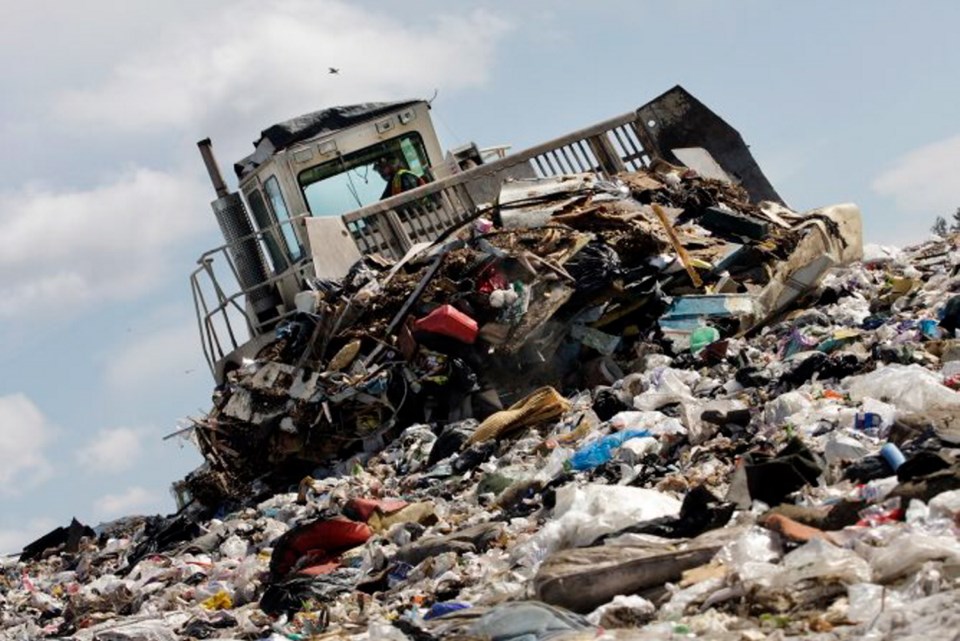In what sounds a lot like landfilling, Capital Regional District staff are recommending taking tonnes of kitchen scraps that homeowners are diligently separating from their garbage, and “storing” it underground in a separate section of the Hartland landfill.
The CRD decided last year to ban kitchen scraps from Hartland in 2015 in a bid to extend the dump’s life.
Collecting it has not been a problem. Municipalities have jumped on board — investing heavily in special trucks and special totes for homeowners so they can separate waste food scraps from other garbage.
Finding companies willing and able to process it into compost, however, has not been so easy.
The only approved facility in the CRD had its licence temporarily suspended because of odour complaints. Another facility in Saanich is in the works, and some of the material is being trucked up-Island.
CRD staff anticipate, however, that of the 30,000 tonnes of food scraps expected to be collected annually by 2015, there will be nowhere to process almost half of it.
“It looks like a bit of a mess,” said Saanich Coun. Vic Derman, who sits on the environmental services committee that will look at the problem Wednesday.
Derman said diverting kitchen scraps from the dump is a worthy idea.
“The belief was that you would go about collecting these scraps, and private industry would see a market opportunity and create the processing capability. But private industry isn’t doing that,” Derman said.
To buy time to develop options, CRD staff recommend a “temporary” solution of spending $200,000 to build a separate storage pit at Hartland complete with “geotextile liner, leachate collection, clay capping and odour management.”
They estimate it will cost $600,000 a year to operate the “temporary food-waste diversion site.” That doesn’t include the cost of excavating the material for processing at a later date.
Esquimalt Mayor Barb Desjardins called the plan “shortsighted” and “a step backwards.”
CRD director of communications Andy Orr said in an email that the plan differs from landfilling in that it’s “not permanent” and involves “storing [kitchen scraps] in a way that is acceptable and safe.”
The alternative, says the staff report, would be to delay implementation of the kitchen-scraps strategy by a year. That would cost about $450,000, based on paying an additional year’s worth of diversion incentives, the report says.
(As a diversion incentive, the CRD is offering a $20-per-tonne rebate on Hartland tipping fees to municipalities and private waste-collection companies for the separation of garbage and kitchen scraps.)
In August, the CRD suspended the interim processing contract with Foundation Organics in Central Saanich and subsequently issued a conditional suspension of its Recycler Licence. As a result, the facility is temporarily prohibited from receiving and processing food waste. Foundation has appealed.
Food waste collected in the region is either being hauled to facilities up-Island or landfilled at Hartland.
Derman and Desjardins are critical of the CRD for dealing with solid waste and sewage treatment as separate issues.
If the CRD were willing to look at gasification as an option for dealing with sewage sludge, such a plant also could handle kitchen scraps, Derman said.
“Why aren’t we looking at solutions that deal with, if not all, much of the entire waste stream and could handle this issue we have?” he asked.
Said Desjardins: “If you want to reduce the landfill, how do you ultimately get to do that? You have to look at waste to energy.”



